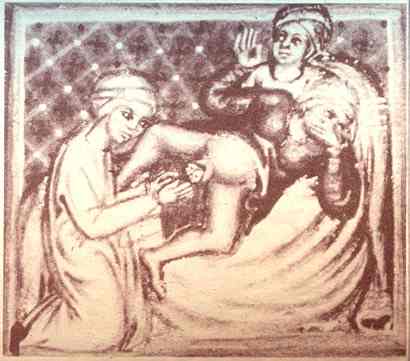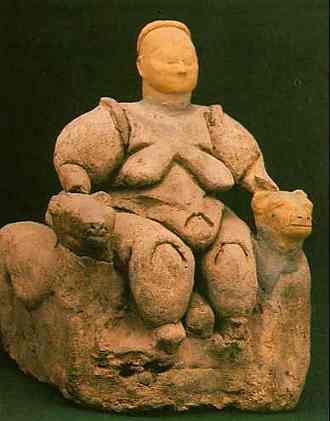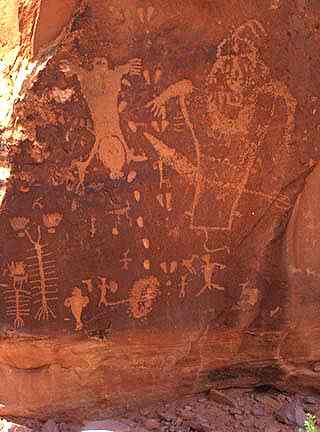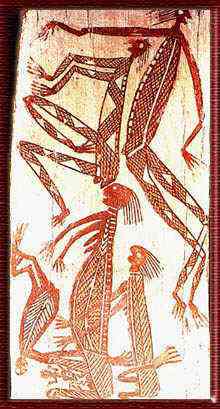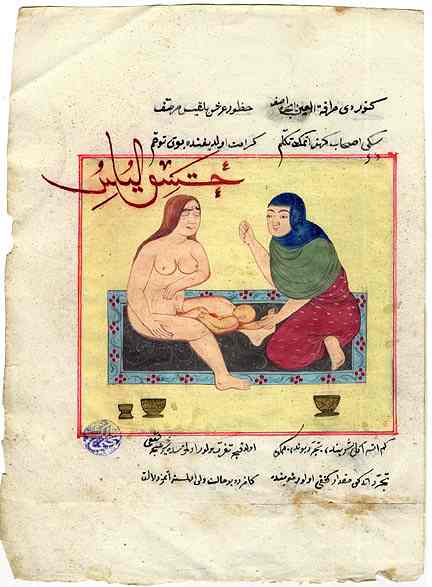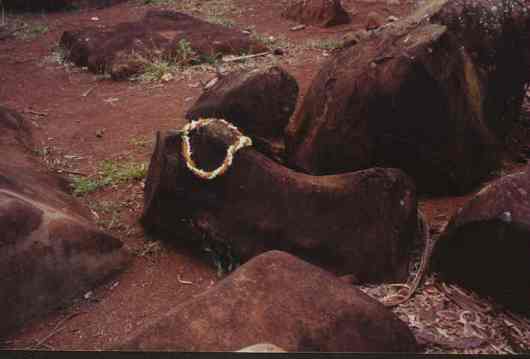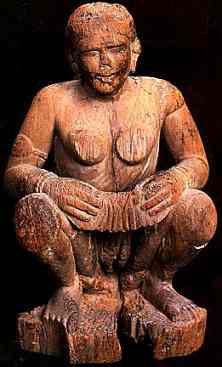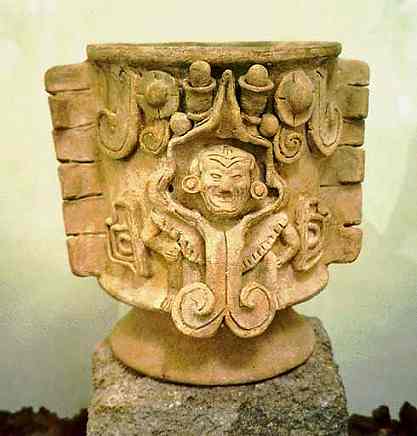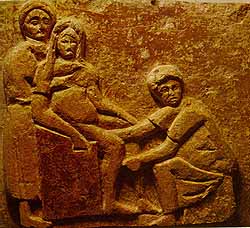A woman giving birth while kneeling on two bricks
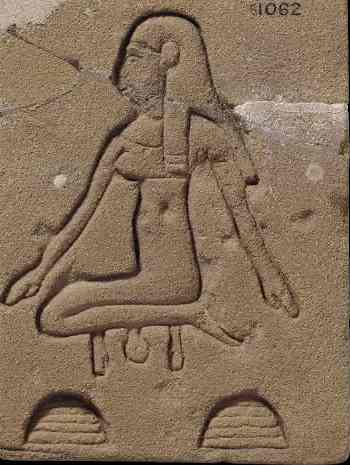
Trial piece with a birth scene from Egypt
Graeco-Roman Period, 332 BC - AD 305
Small stone objects of this type are generally regarded as sculptor's test pieces, but they may also have had a ritual significance, since many examples seem to have been donated to temples.
Here, a woman is shown giving birth. It was very important in ancient Egypt for married couples to have children, especially a son. This was not only to continue the family line, but to perform the rituals of burial and ensure that offerings were maintained for the spirits of his parents in the Afterlife. A woman having difficulty conceiving a child would appeal to the gods for help, leaving small offerings at a local shrine of Hathor. This goddess, often shown as a cow, or woman with the ears of a cow, was particularly associated with fertility and birth.
Birth was one of the most dangerous events in the life of any Egyptian, and was also life-threatening to the mother. Deities such as Taweret and Bes were called upon for protection from the malign spirits which were thought to cause complications with the birth. Heket, the frog goddess, and Meskhenet, who was a personification of the bricks on which the mother knelt, helped the woman to deliver the baby. Both mother and baby then underwent a period of confinement lasting fourteen days, which allowed them to rest, gain strength and avoid infections.
Length: 18 cm
Width: 13.6 cm
Thickness: 4 cm
EA 61062
Department of Ancient Egypt and Sudan (study collection)
M. Stead, Egyptian life (London, The British Museum Press, 1986), pp. 18-19, fig. 24
Small stone objects of this type are generally regarded as sculptor's test pieces, but they may also have had a ritual significance, since many examples seem to have been donated to temples.
Here, a woman is shown giving birth. It was very important in ancient Egypt for married couples to have children, especially a son. This was not only to continue the family line, but to perform the rituals of burial and ensure that offerings were maintained for the spirits of his parents in the Afterlife. A woman having difficulty conceiving a child would appeal to the gods for help, leaving small offerings at a local shrine of Hathor. This goddess, often shown as a cow, or woman with the ears of a cow, was particularly associated with fertility and birth.
Birth was one of the most dangerous events in the life of any Egyptian, and was also life-threatening to the mother. Deities such as Taweret and Bes were called upon for protection from the malign spirits which were thought to cause complications with the birth. Heket, the frog goddess, and Meskhenet, who was a personification of the bricks on which the mother knelt, helped the woman to deliver the baby. Both mother and baby then underwent a period of confinement lasting fourteen days, which allowed them to rest, gain strength and avoid infections.
Length: 18 cm
Width: 13.6 cm
Thickness: 4 cm
EA 61062
Department of Ancient Egypt and Sudan (study collection)
M. Stead, Egyptian life (London, The British Museum Press, 1986), pp. 18-19, fig. 24

Edited By admin on 15 november 2002 at 19:16






 Over Meshkenet staat trouwens ook nog een artikel op de website van Carolyn Seawright. Daar staat ook nogal een apart plaatje op van een geboortesteen.
Over Meshkenet staat trouwens ook nog een artikel op de website van Carolyn Seawright. Daar staat ook nogal een apart plaatje op van een geboortesteen.

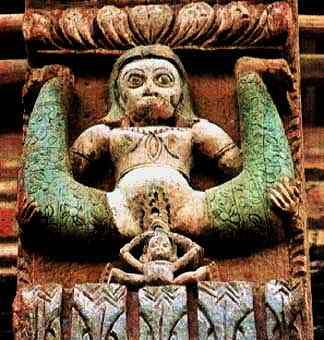


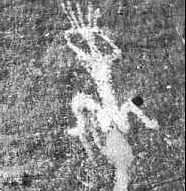
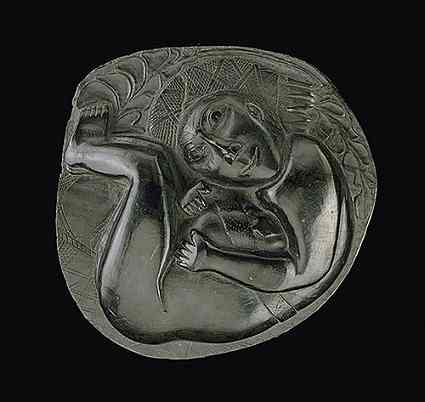
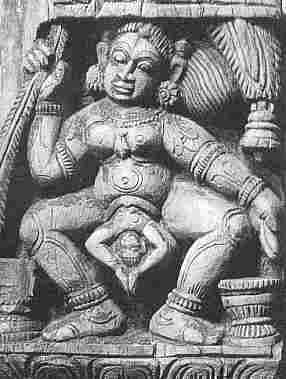 Hier nog een afbeelding uit Kali, de vrouwelijke kracht van Ali Mookerjee (ISBN 90-6271-775-6). Het dateert uit de 18e eeuw, dus het is vrij recent. De begeleidende tekst zegt:
Hier nog een afbeelding uit Kali, de vrouwelijke kracht van Ali Mookerjee (ISBN 90-6271-775-6). Het dateert uit de 18e eeuw, dus het is vrij recent. De begeleidende tekst zegt:




